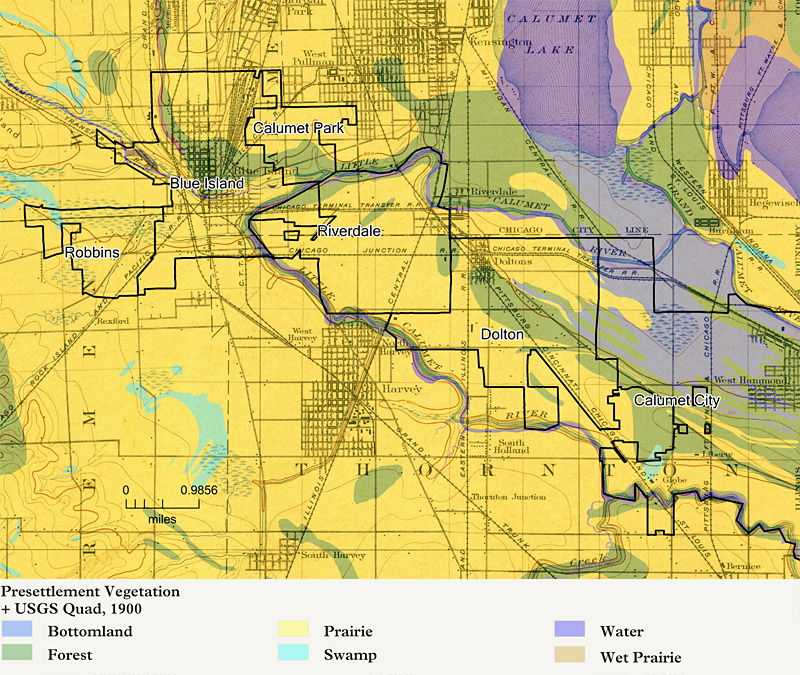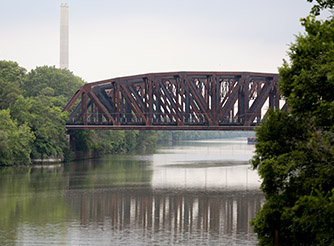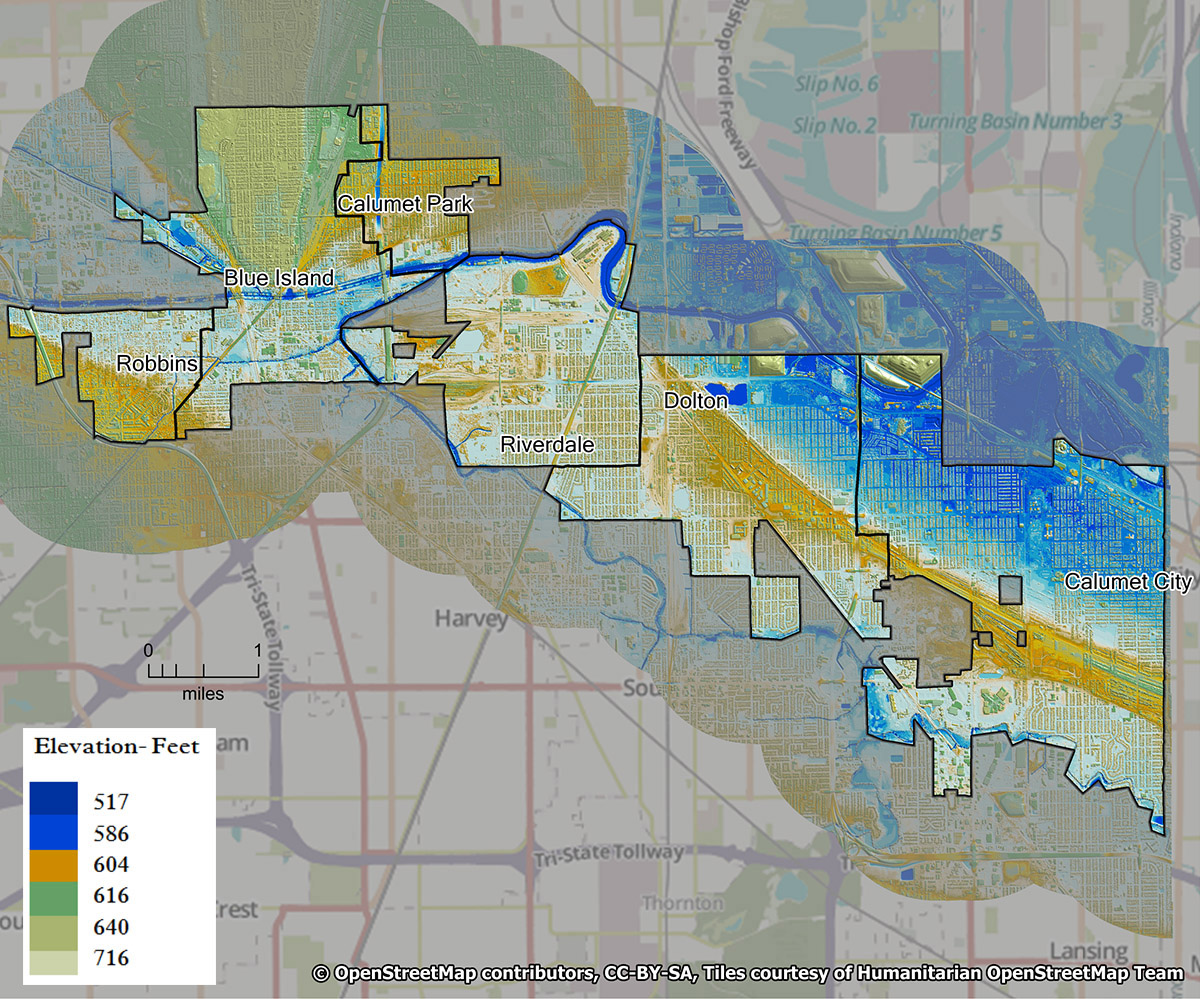History of the Region
Water has shaped the Calumet Corridor in ways that are visible and unseen. Learning from the past is the first step to charting a path forward.

The Heart of the Calumet
Few places weave together nature, people, and industry as distinctively as the Calumet Region. Glaciers, Native Americans, pioneer settlers, railroaders, industrialists, highway builders, and suburbanization have all left their mark on the landscape.
Before European settlement, the Calumet region was composed of prairies, wetlands, forests, and rivers. These generally wet landscapes created diverse habitats that supported rare communities of plants and animals. Indigenous people gathered in the area to engage in trading, hunting, and fishing. Today, many of those ecosystems and their plant and animal inhabitants are highly threatened by sprawling development and pollution from heavy industry and transportation.
In the nineteenth and twentieth centuries, human development dramatically altered the landscape. During this period, each of the six communities of the Calumet Corridor were established, alongside dozens of other nearby towns. The Calumet Corridor’s location – south of Chicago, adjacent to Indiana, and accessible by all major modes of transportation – gave it a tremendous leg up in the race for industrialization. Oil refineries, steel mills, and bulk materials handlers sprung up along railroads and waterways like the Cal-Sag Channel.

Over the past 45 years, the region’s economic base and the number of skilled jobs have declined, reflecting changes in national and international markets and technologies. Some of the Calumet Corridor communities are also suffering from higher crime rates, and diminishing accessibility and quality of social services, public education, and public health services. Chronic flooding compounds these issues, creating significant financial hardship for individuals and undermining community vitality.
The road ahead will not be easy, but the Calumet Region boasts tremendous economic, social, and environmental assets to bolster its journey back to vibrancy. Recent investments in transportation and water infrastructure, research and development facilities, and traditional and emerging industries have strengthened businesses and infrastructure assets, and positioned the entire region to compete in national and global markets. Above all, the tremendous character, commitment, and creativity of Calumet Corridor residents, business owners, and community leaders stand to lead the Calumet Corridor toward economic vitality, beautification, and reduced flood risk.


